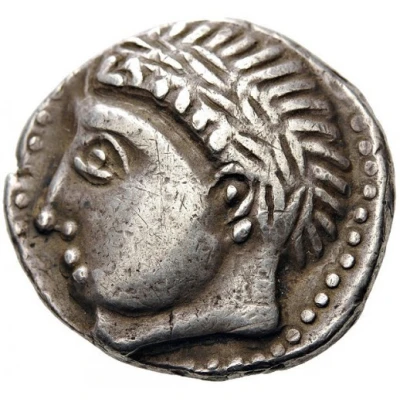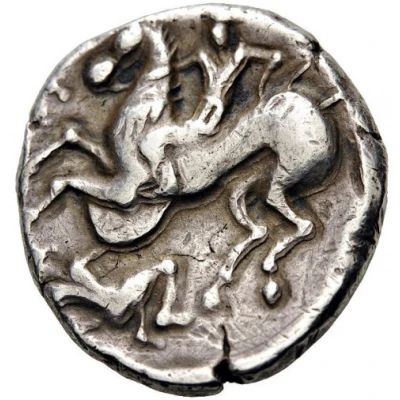


© Nomos AG
Tetradrachm Patraos type 250 BC - 150 BC
| Silver | 12 g | 23 mm |
| Issuer | Agrianes (Thracians) |
|---|---|
| Type | Standard circulation coin |
| Years | 250 BC - 150 BC |
| Value | Tetradrachm (4) |
| Currency | Drachm |
| Composition | Silver |
| Weight | 12 g |
| Diameter | 23 mm |
| Shape | Round (irregular) |
| Technique | Hammered |
| Demonetized | Yes |
| Updated | 2024-10-09 |
| Numista | N#188422 |
|---|---|
| Rarity index | 100% |
Reverse
Armored cavalryman galloping to left, spearing fallen soldier holding Macedonian shield.
Comment
Late 3rd to early 2nd century BC.Kostial lists weights between 11.78-12.88g
References:
Cf. Flesche 632
Cf. Lanz 1004-1005 (but differing styles)
Cf. Paeonian Hoard T. 9, No. 514
Cf. Lanz 58 (1991), No. 34
"The imitations of Patraos are among the earliest of all Balkan imitations of Greek coins. Specimens of this type appeared in the great Paeonian Hoard (IGCH 410), buried c. 315, and it seems very likely that they began to be produced during Patraos’s lifetime, but ceased soon afterwards. All evidence seems to indicate that the Patraos imitations, apparently issued by the Agriones living between the Strymon and the Axios in southern Bulgaria, preceded the more numerous imitations of Philip II, which began to be produced in considerable numbers by the Getae in Dacia to the north." (Nomos auction catalog description, Obolos Web Auction 4, Lot #39, 21.02.2016)
Interesting fact
One interesting fact about this coin is that it features a unique blend of Greek and Thracian elements in its design. The obverse side of the coin depicts a portrait of a young Dionysus, the Greek god of wine and fertility, while the reverse side features a Thracian horseman, symbolizing the power and strength of the Agrianes tribe. This fusion of cultural influences reflects the rich cultural diversity of the ancient world and highlights the exchange of ideas and artistic motifs between different civilizations.